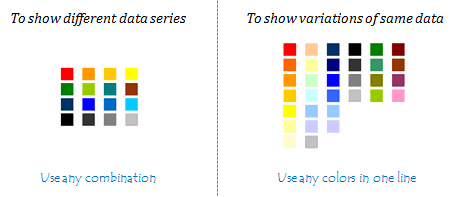Ok, it is Friday again. That means poll time. I would like to know what color choices you prefer for your charts?
My Favorite Colors for Charting
These are the colors I use when making charts in Excel 2007.

Here is a file with all these colors, so that you can copy them to your charts right-away.
Also, these are the colors I recommend in an e-book (you get a copy of that free with Project Management Templates) for people making charts:

What about you?
Share your favorite colors thru comments.
Just list down the RGB codes of your color choices.




















One Response to “How to export YouTube video comments to Excel file? – Free template + Power Query case study”
And I asked myself when i saw your Accouncement Video for the Give away: "Seriously, will Chandoo go manualy thru all his Videos and pick the winners?!". Great connection to the give away with this tutorial 🙂 !